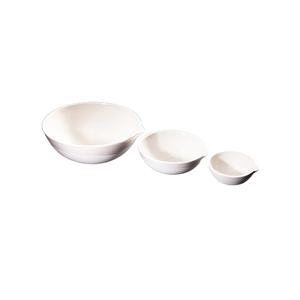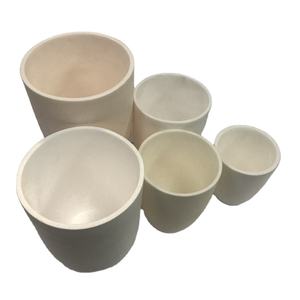Professional industry ceramic supplier, silicon nitride, silicon carbide, aluminum nitride and any other kinds of ceramics.
PRODUCT PARAMETERS
Description
Overview of High Temperature Carbon Sulfur Analyzer SiO2 Silica Ceramic Crucible
High Temperature Carbon Sulfur Analyzer SiO2 Silica Ceramic Crucible are specialized containers designed for withstanding extremely high temperatures in laboratory and industrial settings. They are essential for processes such as melting, calcining, and heat-treating a wide variety of materials, including metals, glasses, and chemicals. Our crucibles are engineered for superior thermal stability and chemical resistance, ensuring purity and reliability in the most demanding applications.
Features of High Temperature Carbon Sulfur Analyzer SiO2 Silica Ceramic Crucible
-
Exceptional Thermal Shock Resistance: Withstands rapid temperature changes without cracking, ensuring durability and a long service life.
-
High-Temperature Stability: Maintains structural integrity at extreme temperatures, often exceeding 1500°C.
-
Excellent Chemical Inertness: Resists corrosion and reaction with molten metals, acids, and aggressive chemical fluxes.
-
High Purity & Low Contamination: Manufactured from premium materials to prevent sample contamination during sensitive processes.
-
Optimized Thermal Properties: Designed for efficient heat transfer and consistent performance in furnace environments.
-
Robust Mechanical Strength: Offers good resistance to physical impact and abrasion during handling and use.
Specifications of High Temperature Carbon Sulfur Analyzer SiO2 Silica Ceramic Crucible
This crucible works with high temperature carbon sulfur analyzers. It handles extreme heat during sample combustion. The material is pure silica ceramic. This purity matters. It prevents unwanted contamination. Your carbon and sulfur readings stay accurate.
The crucible tolerates temperatures up to 1600°C. This is essential. The analyzer needs intense heat to burn samples completely. Standard materials might melt or release gases. This crucible stays stable. It won’t crack under thermal shock either. Rapid heating and cooling happen often.
Low blank values are critical. The crucible itself contributes almost no carbon or sulfur background. You get true readings of your sample’s content. High purity SiO2 ensures this. Trace elements are minimized. You avoid false positives.
Chemical inertness is another key feature. The silica ceramic resists reactions with hot gases and molten fluxes. It won’t introduce errors by interacting with your sample. Consistency between runs improves. Your results are reliable.
Reusability offers practical value. The crucible withstands multiple heating cycles. Clean it thoroughly between uses. This saves costs over disposable options. Proper handling extends its lifespan. Handle it carefully to avoid chips.
The design fits standard analyzer holders. Loading samples is straightforward. Uniform wall thickness ensures even heating. This promotes complete combustion every time. Your sample turns to gas consistently. The analyzer detects carbon and sulfur precisely. These crucibles suit metals, minerals, ores, ceramics.
Applications of High Temperature Carbon Sulfur Analyzer SiO2 Silica Ceramic Crucible
This crucible handles high heat testing. It’s made of pure silica ceramic. Silica works well for carbon and sulfur analysis. It withstands extreme temperatures. Many tests need over 1500°C. This crucible doesn’t melt or warp there. That’s important. Crucibles failing mid-test ruin results.
Chemical stability matters too. Silica doesn’t react easily. Carbon and sulfur measurements need accuracy. Contamination skews results. This crucible doesn’t add extra carbon. It doesn’t add extra sulfur either. Other materials might leach impurities. Silica keeps things clean. This purity is crucial for reliable data.
These crucibles are essential for metal analysis. Factories check steel quality. Foundries verify iron composition. They measure carbon and sulfur precisely. Low levels matter a lot. Even tiny amounts affect metal strength. The crucible must not interfere.
Ore and mineral testing uses them too. Geologists analyze rock samples. Miners check ore purity. Knowing carbon and sulfur content is vital. Processing depends on accurate numbers. Contaminated results waste time and money.
Industrial labs rely on these crucibles daily. They fit standard carbon/sulfur analyzers. The high purity silica ensures consistent performance. Operators trust them for critical measurements. They provide a stable, inert container. The sample heats up cleanly inside. Gases release properly for detection. Accurate readings depend on this.
Company Profile
Tanki New Materials Co.Ltd. focus on the research and development, production and sales of ceramic products, serving the electronics, ceramics, chemical and other industries. Since its establishment in 2015, the company has been committed to providing customers with the best products and services, and has become a leader in the industry through continuous technological innovation and strict quality management.
Our products includes but not limited to Aerogel, Aluminum Nitride, Aluminum Oxide, Boron Carbide, Boron Nitride, Ceramic Crucible, Ceramic Fiber, Quartz Product, Refractory Material, Silicon Carbide, Silicon Nitride, ect. please feel free to contact us.

Payment Methods
T/T, Western Union, Paypal, Credit Card etc.
Shipment Methods
By air, by sea, by express, as customers request.
5 FAQs of High Temperature Carbon Sulfur Analyzer SiO2 Silica Ceramic Crucible
What does this crucible do?
This crucible holds samples inside carbon sulfur analyzers. It handles the extreme heat needed for testing. The silica ceramic material stops unwanted reactions with your sample. This keeps your carbon and sulfur measurements accurate.
How hot can it get?
It handles temperatures over 1600°C easily. Normal analyzer operating temperatures are no problem. The special silica ceramic construction resists thermal shock. Sudden temperature changes won’t crack it.
Can I use it more than once?
No, reuse is not possible. The crucible is for one test only. High temperatures change its structure. Using it again risks contaminating your next sample. Always use a fresh crucible for each analysis.
What samples work with it?
It works with most metals, ores, and inorganic materials tested in carbon sulfur analyzers. The silica ceramic resists chemical attack from common fluxes and samples. It stops extra carbon or sulfur from the crucible itself messing up your results. Check your specific material is compatible.
How should I handle them?
Store crucibles in a clean, dry place. Handle them with clean gloves or tweezers. Finger oils or dirt on the crucible can add carbon. This contaminates your sample. Place the crucible carefully into the analyzer furnace. Always follow your analyzer’s loading instructions.
REQUEST A QUOTE
RELATED PRODUCTS
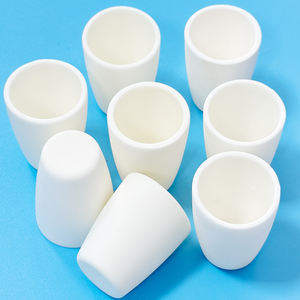
Custom Heat Resistant Alumina Ceramic Crucible Large Silica Opaque Quartz Crucible
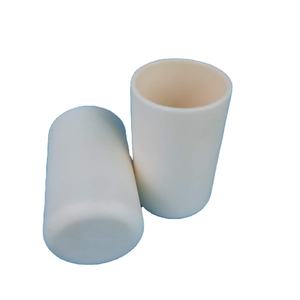
Ronghua Graphite Crucible 10kg 40kg Graphite Ceramic Crucible 50kg Silicon Carbide Crucible for Aluminum Melting Foundry

Industry Whole Alumina Ceramic Crucible
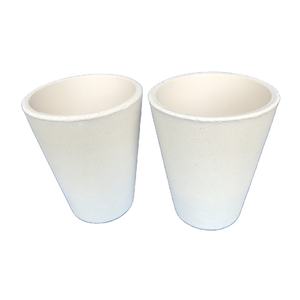
Factory Manufactured Alumina Ceramic Crucible High Purity 99% Al2O3 Melting Crucible Lab Use Cutting Bending Welding Services

Ceramic Melting Casting Crucible Smelting Gold Platinum Silver Metal and Glass Fused Silica Heating Cup Bowl Pot Quartz Crucible
